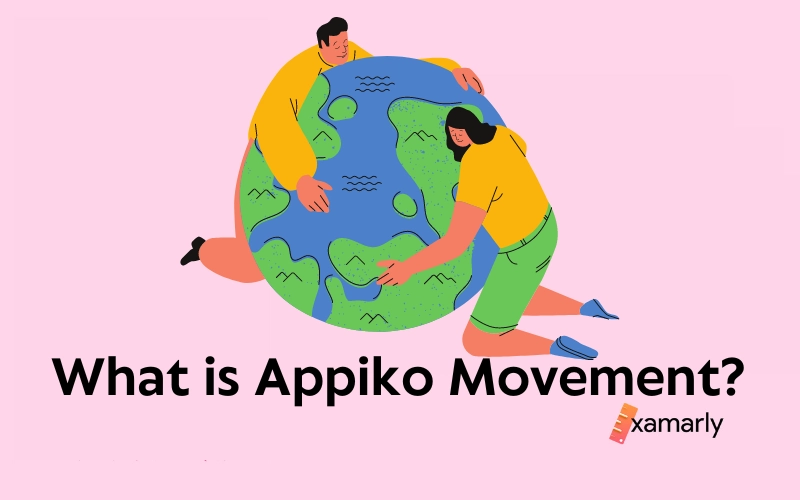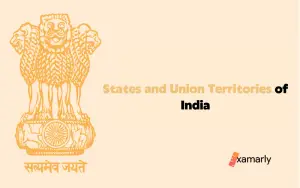The Appiko movement is a forest-based environmental movement that focused on conservation and rational usage of the ecosphere. The movement is named after the indigenous Kannada word for a hug or embrace and was founded in 1983 by a group of young men and women who understood the importance of Indian natural forests and the need to protect them.
If you are not familiar with the movement, this article will offer you some background information. You will also learn about its objectives and effects.
The Appiko Movement is an initiative to protect the last remnants of tropic jungles and the felling of trees in the Western Ghats. This area has been extensively logged over the past century for its rich deposits of bauxite and iron.
As the forests are not regenerated fast enough, it will take centuries before the trees begin to grow again. This movement is a great example of grassroots activism and has garnered widespread support.
The Appiko Movement is a nonviolent grassroots movement that promotes the restoration and preservation of the biosphere.
This subject is quite vital in the “Environment” section of the UPSC exam pattern.
What Is Appiko Movement all about?
- The Appiko movement was launched in the village of Salkani in the Sirsi taluk of Karnataka by Panduranga Hegde.
- It soon spread to several districts in the state, as well as to the hill district of Wayanad in Kerala, which saw a dramatic decline in its forest cover between 1905 and 1984.
- The Movement has spread its roots throughout southern India.
- The movement was initiated and led by Panduranga Hegde, a prominent environmental activist, and later led by Amrita Devi.
- The initiative was termed Appiko, which means “hug” in Kannada and represents tree conservation.
- The movement’s aim was to protect the remaining forest cover, regenerate trees in degraded areas, promote afforestation on denuded lands and use forest wealth while considering conservation movement.
- To promote awareness, the movement employed a variety of strategies, including hikes through the deep forest regions, pictures, traditional dances, and street plays.
- Women, as well as youth from Saklani and neighboring villages, walked 5 miles to the nearby woods and embraced sacred trees.
- They compelled the state forest department’s fellers and contractors to halt felling trees.
- The people urged that the felling of green trees be prohibited.
- After a 38-day agitation, the state government ultimately gave in to their requests and revoked the tree-felling order.
- The Appiko Movement is a grassroots campaign in India that revived Gandhian principles of foot marches protest and a balance between man and nature.
- The movement is seen as a modern echo of the Chipko Andolan, which took place in the north of India.
Aims & Objectives of this Green Movement
The Appiko Movement was born in the Western Ghats of Karnataka. This social movement is aimed at changing people’s attitudes about forestry. To help save the environment, people are encouraged to plant trees which are the main source of sustenance and make use of alternative energy sources.
The movement has three primary objectives:
- to conserve the tropical forest ecosystem in the Western Ghats,
- to replenish the depleted vegetation, and
- to propagate the concept of sustainable utilization of forests to help alleviate the strain on forest resources.
Appiko activists mobilize local communities, sustain awareness campaigns, and organize community activities. The power generation, water supply, and the whole economy of south India are adversely affected.
They have also taken up a larger goal, that of saving the Western Ghats, a mountain range in the state that has been heavily exploited for its iron and bauxite deposits for sustainable development.
The movement’s slogan, “Save and Grow”, reflects the three main areas that it aims to achieve. While each of these goals has its own corresponding objectives, each has an important place in the movement’s overall goal.
Background Details of Appiko Andolan
- The Appiko Movement started in the Uttara Kannada district of Karnataka, where it was inspired by Sunderlal Bahuguna.
- The Appiko movement was started in 1983 in Sirsi Taluk, Uttara Kannada, with a group of villagers requesting the forest department not continue felling operations in the Bilegal forest.
- The forest department ignored their request and continued its clear-felling operation.
- The villagers felt the consequences of this arrogance when they witnessed the ruthless and degrading conditions of the soil and the dwindling of perennial water sources.
- The group was backed by the Mahila Mandal of Kerehosahalli and many other local organizations.
- People in Sirsi Taluk’s Salkani village were deprived of the last remaining piece of forest near this and surrounding villages for biomass for fuelwood, fodder, and honey.
- Furthermore, the spice-garden farmers of Uttara Kannada, who were heavily reliant on forest leaf manure, were severely impacted.
Effects of Appiko Movement on Nature and Forest Cover
The Appiko Movement, which advocates for the afforestation of lands devoid of trees, has been very successful in promoting reforestation. The movement has had a snowball effect across many other regions. In fact, the movement has successfully protected the Himalayan region’s evergreen forest.
- The Appiko movement safeguarded the people’s fundamental livelihood resources, such as bamboo trees, which could be utilized to manufacture handcrafted things to augment their income.
- It also preserved medicinal trees for local residents to use.
- Furthermore, the movement raised awareness among peasants throughout the Western Ghats about the environmental threat presented by industrial and commercial interests to their forests, which were their primary source of income.
- The movement’s activists are largely responsible for the construction of 2,000 fuel-efficient chulhas in the region without any assistance from the government. They also have also installed these chulhas in hotels. This has reduced fuelwood consumption by almost 40 percent.
The Appiko movement in South India was successful and Sunderlal Bahuguna‘s slogan “Ecology is Permanent Economy” became famous.
Conclusion
In the Western Ghats of Karnataka, the Appiko movement took place in the Uttara Kannada district. This movement raises awareness of the sensitivity of the environment. Pandurang Hegde was the Appiko movement leader.
The development projects that were responsible for the loss of tree cover in the area displaced thousands of indigenous people and depleted the natural resources. The movement took up the cause and began a nonviolent crusade to protect the forests and the tribal groups that depend on them.
FAQs related to Appiko Movement
How can the general public support the Appiko movement?
The general public can support the Appiko movement by spreading awareness about the initiative and its goals, and by supporting organizations and initiatives that work towards sustainable forestry and environmental conservation. The public can also participate in reforestation and afforestation efforts, support the use of NTFPs and other sustainable products, and advocate for government policies that support community-based conservation.
How has the Appiko movement impacted the local communities?
The Appiko movement has had a positive impact on the local communities by improving their livelihoods through the promotion of NTFPs and other sustainable livelihood initiatives. The movement has also helped to conserve the region’s forest cover, which is critical for maintaining the biodiversity of the area and ensuring the long-term ecological health of the region. In addition, the movement has empowered local communities by involving them in the conservation and management of their forests, thereby giving them a sense of ownership and responsibility towards the forest.
Who started the Appiko movement?
The Appiko movement was started by a group of local people, led by the social activist and environmentalist, Panduranga Hegde.
What are some of the key practices promoted by the Appiko movement?
Some of the key practices promoted by the Appiko movement include community-based forestry management, sustainable forestry practices, reforestation, afforestation, and agroforestry.






